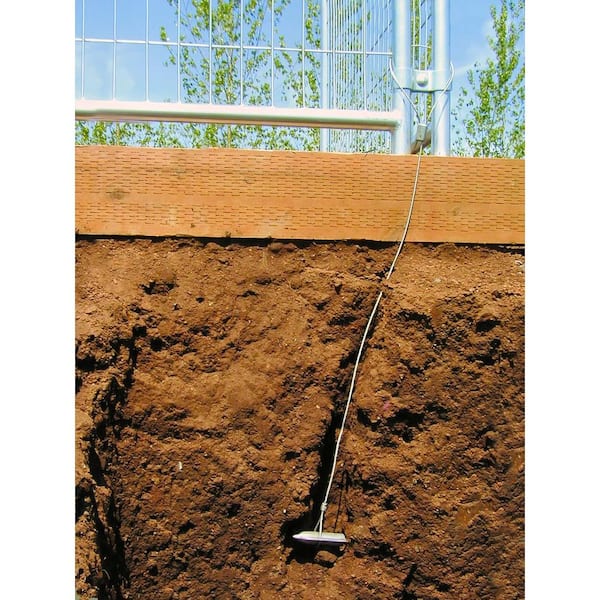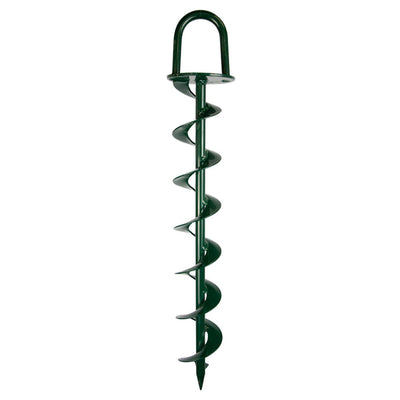The Importance of a Strong Ground Anchor Helps for Trailers
Wiki Article
Explore the Different Kinds of Ground Support for Your Next Job
When starting a building or landscape design project, recognizing the numerous sorts of ground anchors readily available is vital to making certain both security and resilience (Ground Anchor). From auger supports, which excel in diverse dirt problems, to stake supports made for temporary installations, the alternatives are many. Furthermore, concrete and screw anchors existing special advantages in details circumstances, while deadman anchors are tailored for applications requiring resistance to side pressures. The choice of a suitable anchor kind can dramatically influence the total success of your job, triggering further expedition right into their respective advantages and applications.
Auger Anchors
Auger anchors are a preferred option in numerous building and construction and landscaping tasks due to their special design and reliable securing capacities. These anchors contain a helical screw-like shaft that is driven right into the ground, enabling for a safe and secure and secure hold. The spiral design promotes very easy installment and maximizes resistance against side forces, making auger anchors specifically efficient in applications such as fence, momentary frameworks, and erosion control.The setup procedure of auger supports is fairly simple. Auger anchors can be quickly removed and recycled, which adds to their cost-effectiveness and sustainability.
One of the substantial benefits of auger anchors is their capability to disperse loads equally across the surrounding soil, minimizing the danger of soil disturbance and lessening environmental influence. Furthermore, they are much less vulnerable to heaving or loosening up in time contrasted to traditional securing methods. Auger anchors are a superb selection for jobs requiring durable and reliable anchoring services.

Risk Anchors
When it involves protecting structures in a selection of exterior applications, risk supports use a reliable and straightforward solution. These supports are normally created from sturdy products such as steel or aluminum, created to hold up against ecological anxieties while supplying ideal security. Their straightforward style permits fast installment, making them an excellent option for irreversible or momentary anchoring needs.Risk anchors are specifically valuable in securing camping tents, canopies, and various other lightweight frameworks versus wind and climate. They work by being driven into the ground at an angle, developing a strong hold that resists pull-out pressures - Ground Anchor. The effectiveness of stake anchors depends on numerous elements, consisting of dirt type, dampness content, and the angle of setup
For added safety and security, numerous stake anchors include add-on factors for straps or ropes, enabling for tension adjustments as required. In applications such as landscaping or building and construction, they can effectively support tools or frameworks on uneven terrain. In general, stake anchors offer a functional and economical service for securing different exterior installments, making them a recommended choice for professionals and DIY enthusiasts alike.
Concrete Anchors
Concrete supports provide a durable service for securing frameworks to concrete surfaces, making certain security and security in various applications. These anchors are necessary for tasks ranging from residential building and constructions to large-scale commercial installations. They can be found in various types, including development supports, glue supports, and undercut supports, each designed for particular load demands and environmental problems.
Sticky anchors make use of high-strength epoxy or resin to bond the support to the concrete, providing superior load-bearing capacities, especially in fractured concrete circumstances. Undercut supports produce a special form within the concrete, giving exceptional holding power, particularly in applications where tensile loads are prevalent.
When carried out properly, concrete supports substantially enhance the structural stability of various jobs, making them indispensable in contemporary construction techniques. Recognizing the certain requirements of your project will certainly assist in picking the ideal kind of right here concrete anchor for the task.
Screw Anchors

Screw supports are a functional fastening option that can be successfully used in a variety of applications where standard concrete supports might not be enough. These anchors consist of a helical design that allows them to be easily driven right into the ground, making them excellent for usage in soil and other substrates. Their special structure provides exceptional holding power and resistance to pull-out forces, making them appropriate for many jobs, from landscaping to architectural assistance.
Among the main benefits of screw anchors is their simplicity of installment. They require very little tools and can often be installed without the need for excavation, which saves both time and labor expenses. In addition, screw anchors can be removed and reused, providing a lasting service for short-lived applications.
Screw supports are particularly advantageous in locations where soil problems are testing, such as sandy or loose soils. Their capability to be set up at varying midsts permits for personalization based upon specific project requirements. On the whole, screw supports provide a trustworthy and efficient securing technique, making them an outstanding choice for engineers and professionals seeking reliable remedies for their jobs.
Deadman Anchors
Deadman supports work as a durable solution for stabilizing structures in difficult conditions, specifically where traditional securing approaches may fail. These anchors contain huge, hefty items buried underground, which create resistance versus lateral pressures. The layout typically involves a over here horizontal element, such as a block of concrete or a metal plate, hidden in the dirt, to which cable televisions or straps are connected.The efficiency of deadman anchors lies in their capacity to distribute lots over a bigger location, lowering the risk of failing in unpredictable soil problems. They are particularly useful in applications such as keeping walls, temporary structures, and slope stabilization, where dirt motion can compromise the stability of the structure.
Setup of deadman anchors calls for careful planning to ensure they are placed at the proper depth and orientation, optimizing their load-bearing ability. While they might need more labor and material than light-weight anchors, their dependability in adverse conditions makes them indispensable for long-term projects. Furthermore, deadman anchors are flexible and can be adapted to different applications, making them a best option for designers click to find out more facing distinct obstacles in their projects.
Conclusion
In summary, choosing the appropriate sort of ground anchor is important for guaranteeing stability and safety and security in different jobs. Auger anchors master diverse dirt problems, while stake anchors suit momentary applications. For concrete surfaces, development and glue supports supply trustworthy choices, and screw supports provide flexibility in difficult terrains. Deadman anchors are particularly effective in withstanding lateral pressures for maintaining walls. Mindful consideration of these options will certainly improve project outcomes and structural stability.Additionally, concrete and screw supports existing one-of-a-kind benefits in specific situations, while deadman supports are customized for applications requiring resistance to side pressures - Ground Anchor.Auger supports are a preferred choice in different building and landscape design jobs due to their unique design and efficient securing capacities. They come in different types, consisting of growth supports, glue supports, and undercut anchors, each designed for certain tons needs and environmental conditions
Adhesive anchors utilize high-strength epoxy or material to bond the anchor to the concrete, supplying remarkable load-bearing capacities, especially in broken concrete scenarios. On the whole, screw supports offer a reliable and trusted anchoring method, making them an outstanding choice for designers and professionals looking for efficient remedies for their projects.
Report this wiki page